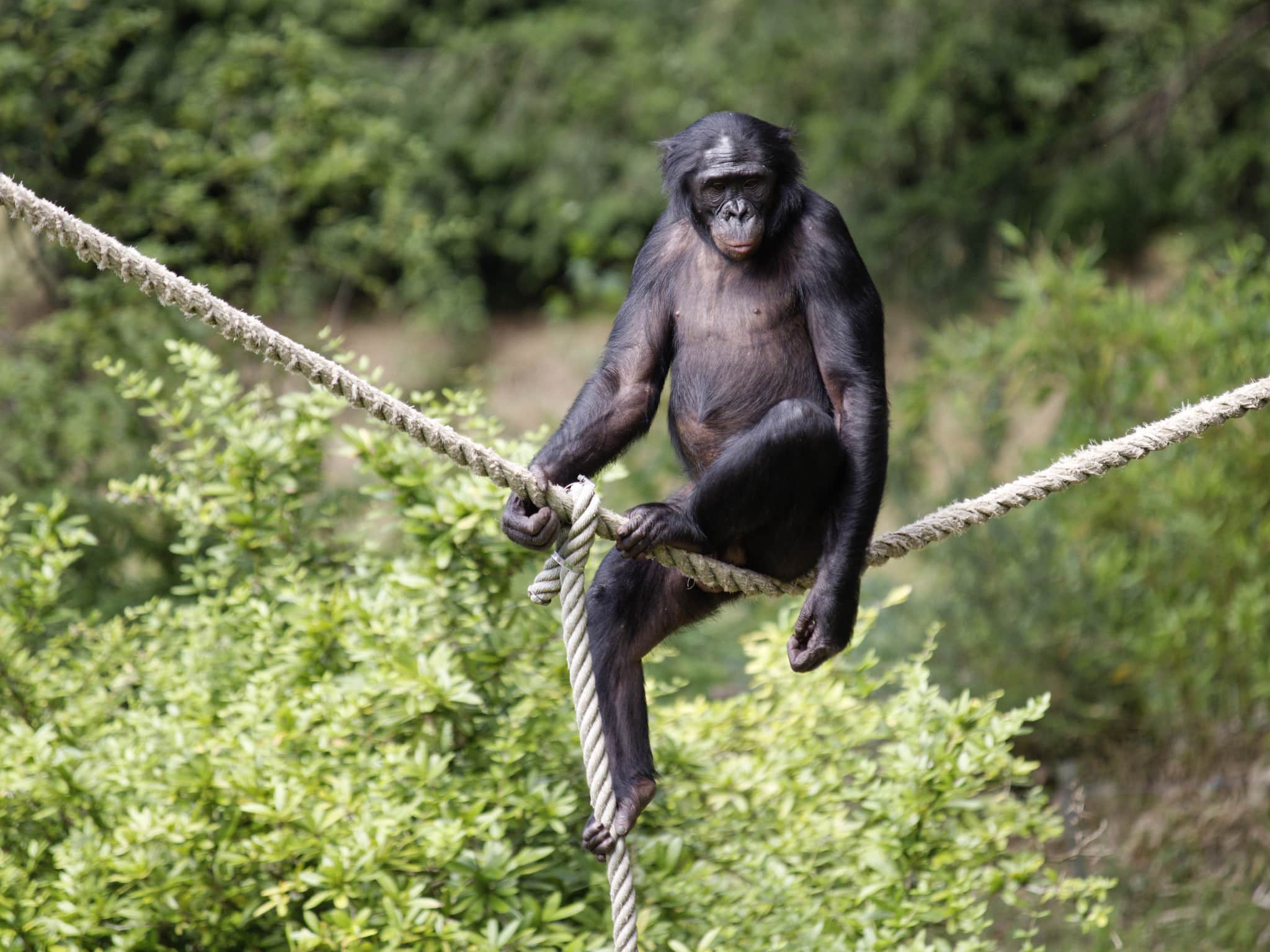

Bonobos, one of our closest living relatives, may be capable of using sound to mirror early forms of human language. Led by scientists from the University of Zurich, the study suggests that bonobos combine different calls to express complex ideas—a behavior once believed to be uniquely human.
Researchers say this ability shows a feature known as compositionality, the building block of language that allows people to join words and create more detailed meanings.
Mélissa Berthet, the study’s lead author, spent five months in the Kokolopori Bonobo Reserve in the Democratic Republic of the Congo.
She recorded 700 bonobo calls, ranging from “peeps” and “whistles” to “yelps” and “grunts,” and documented over 300 contextual details for each, including behavior, surroundings, and group reactions.
She would start at 4 a.m. to track them before they left their nests. Over time, she began noticing patterns in how they used certain sounds. The study’s results were published in Science.
By comparing calls that occurred in similar situations, researchers used tools from human linguistics to create a kind of “dictionary” of bonobo communication. They created a five-dimensional “meaning map” to study how calls grouped in context.
When some of these individual calls were combined, they produced meanings that went beyond simply stacking ideas.
For instance, a “peep-whistle” combination was frequently used in sensitive social moments, such as mating or dominance displays. On its own, a “peep” might mean something like “I’d like to…” while a “whistle” could signal group cohesion, such as “let’s stay together.” But together, they seemed to express a new, more nuanced idea.
The study highlights what researchers describe as nontrivial compositionality—a feature of language where one element changes or adds nuance to the meaning of another. In human language, this is how words combine to express layered ideas.
The researchers suggest that bonobos may exhibit a simpler form of this process, whereby the combination of two calls results in a new meaning that is not merely the sum of its parts.
The study’s co-author, Simon Townsend, who studies primate communication, said, “That’s what we’ve evolved it for.” He added, “to add this important nuance and complexity to the meaning that we convey.”
Some scientists, such as computational linguist Shane Steinert-Threlkeld at the University of Washington, wonder if these sound combinations might act more like idioms—phrases whose meanings aren’t always tied to their parts.
Others question whether the new method proves language-like behavior, pointing out that even bacteria communicate using molecular signals that might meet some of the same criteria.
Can you communicate in chimp sign language?
A new study suggests humans can understand the gestures wild chimps and bonobos use to communicate with one another pic.twitter.com/V9jN064Eue
— BBC World Service (@bbcworldservice) January 27, 2023
Despite the debate, the study’s approach has drawn wide praise for its scale and precision. Maël Leroux, an evolutionary biologist not involved in the research, said this is a “pivotal” study that “will change the face of the field.”
Townsend agrees that the findings may be just the beginning. According to Townsend, if this capacity exists in bonobos, our close relatives, it could help us understand what our last common ancestor—who lived around 7 million years ago—was already capable of.
The team hopes their method, which avoids playback experiments and draws from careful observation, can be applied to other species. “We don’t know yet if bonobos are special,” Berthet said. “We developed this method, we used it on bonobos, and we found very cool results. But maybe you could do that on other animals.”
